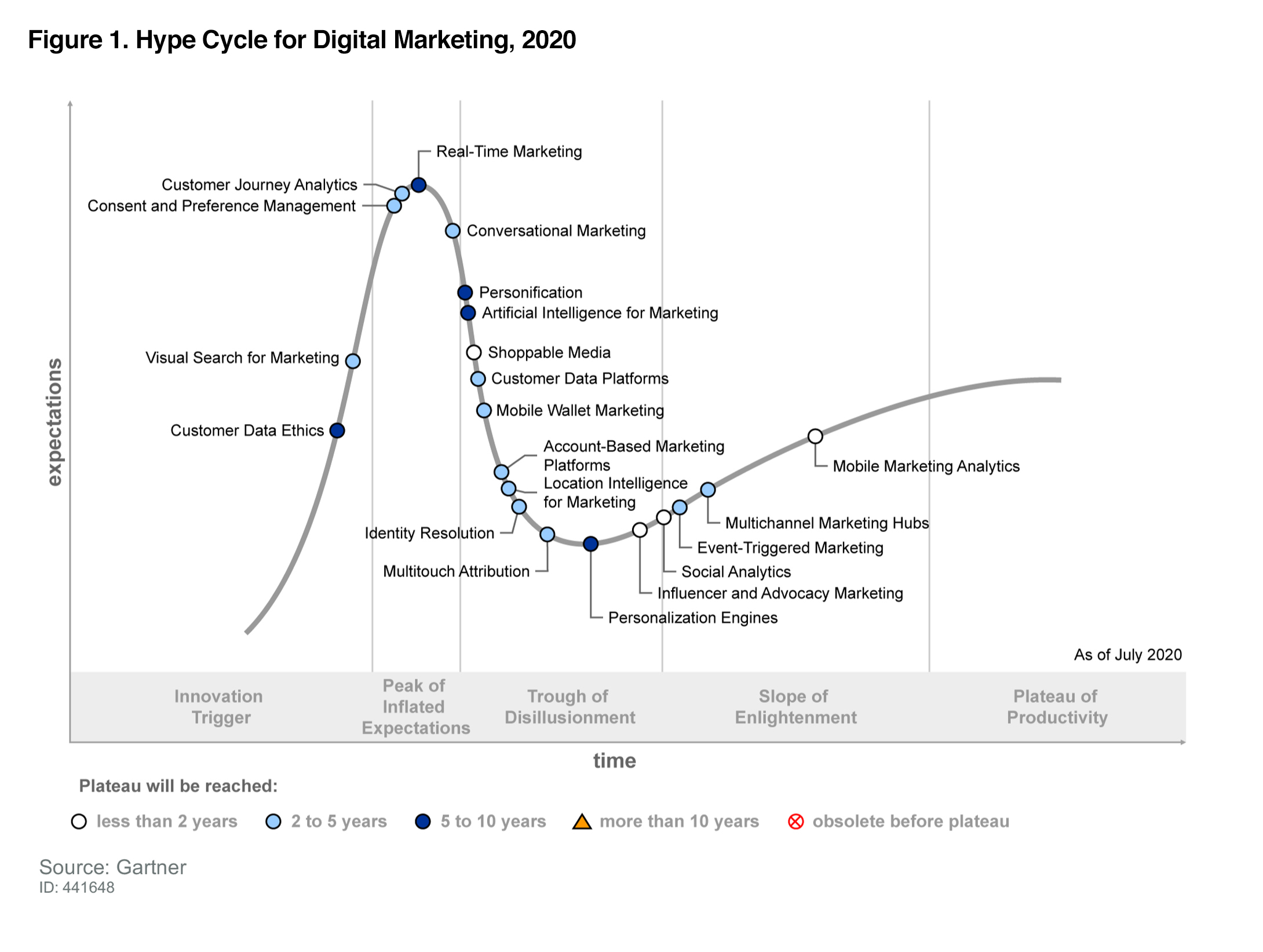

- #2020 gartner hype cycle full#
- #2020 gartner hype cycle series#
It's defined as various machine learning (ML) methods that learn a representation of artifacts from the data and generate brand-new, completely original, realistic artifacts that preserve a likeness to the training data, not repeat it. Generative AI is the second new technology category added to this year's Hype Cycle for the first time.


These techniques are ideal for AI problems where there are no big datasets available.
#2020 gartner hype cycle series#
Gartner defines this technology as a series of techniques that enable organizations to manage production models that are more resilient and adapt to major world events like the pandemic or future disruptions. Small Data is now a category in the Hype Cycle for AI for the first time.
#2020 gartner hype cycle full#
A better AI deployment strategy is to consider the full scope of technologies on the Hype Cycle and choose those delivering proven financial value to the organizations adopting them. Gartner warns there's a lot of hype surrounding AGI and organizations would be best to ignore vendors' claims of having commercial-grade products or platforms ready today with this technology.
Artificial General Intelligence (AGI) lacks commercial viability today and organizations need to focus instead on more narrowly focused AI use cases to get results for their business. They're also recommending organizations look at insight engines' potential to deliver value across a business. Gartner recommends projects involving Natural Language Processing (NLP), machine learning, chatbots and computer vision to be prioritized above other AI initiatives. Gartner clients are wisely moving to minimum viable product and accelerating AI development to get results quickly in the pandemic. Before the pandemic, pilot projects' success or failure was, for the most part, dependent on if a project had an executive sponsor and how much influence they had. AI-based minimum viable products and accelerated AI development cycles are replacing pilot projects due to the pandemic across Gartner's client base. According to the Hype Cycle, it may be economical for applications where utilization is low, but the urgency of completion is high. GPU computing is also available as a cloud service. Gartner advises its clients that GPU-accelerated Computing can deliver extreme performance for highly parallel compute-intensive workloads in HPC, DNN training and inferencing. Gartner predicts GPU Accelerators will see a 100% improvement in adoption in two to five years, increasing from 5% to 20% adoption last year to 20% to 50% this year. GPU Accelerators are the nearest-term technology to mainstream adoption and are predicted to deliver a high level of benefit according to Gartner's' Priority Matrix for AI, 2020. Bot vendors to watch include Amazon Web Services (AWS), Cognigy, Google, IBM, Microsoft, NTT DOCOMO, Oracle, Rasa and Rulai. Gartner points to chatbot's successful adoption as the face of AI today and the technology's contributions to streamlining automated, touchless customer interactions aimed at keeping customers and employees safe. Gartner revised the bots' penetration rate from a range of 5% to 20% last year to 20% to 50% this year. Chatbots are projected to see over a 100% increase in their adoption rates in the next two to five years and are the leading AI use cases in enterprises today. Smarter with Gartner, 2 Megatrends Dominate the Gartner Hype Cycle for Artificial Intelligence, 2020.ĭetails Of What's New In Gartner's Hype Cycle for Artificial Intelligence, 2020







 0 kommentar(er)
0 kommentar(er)
